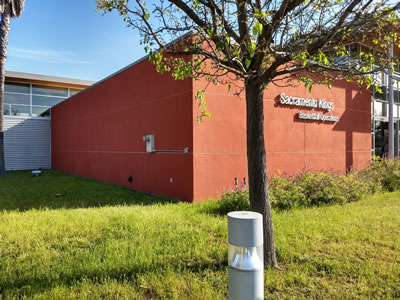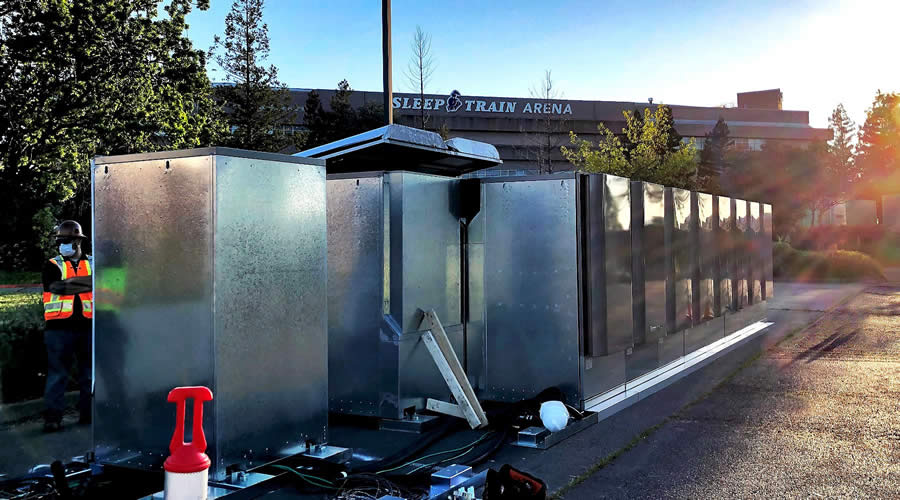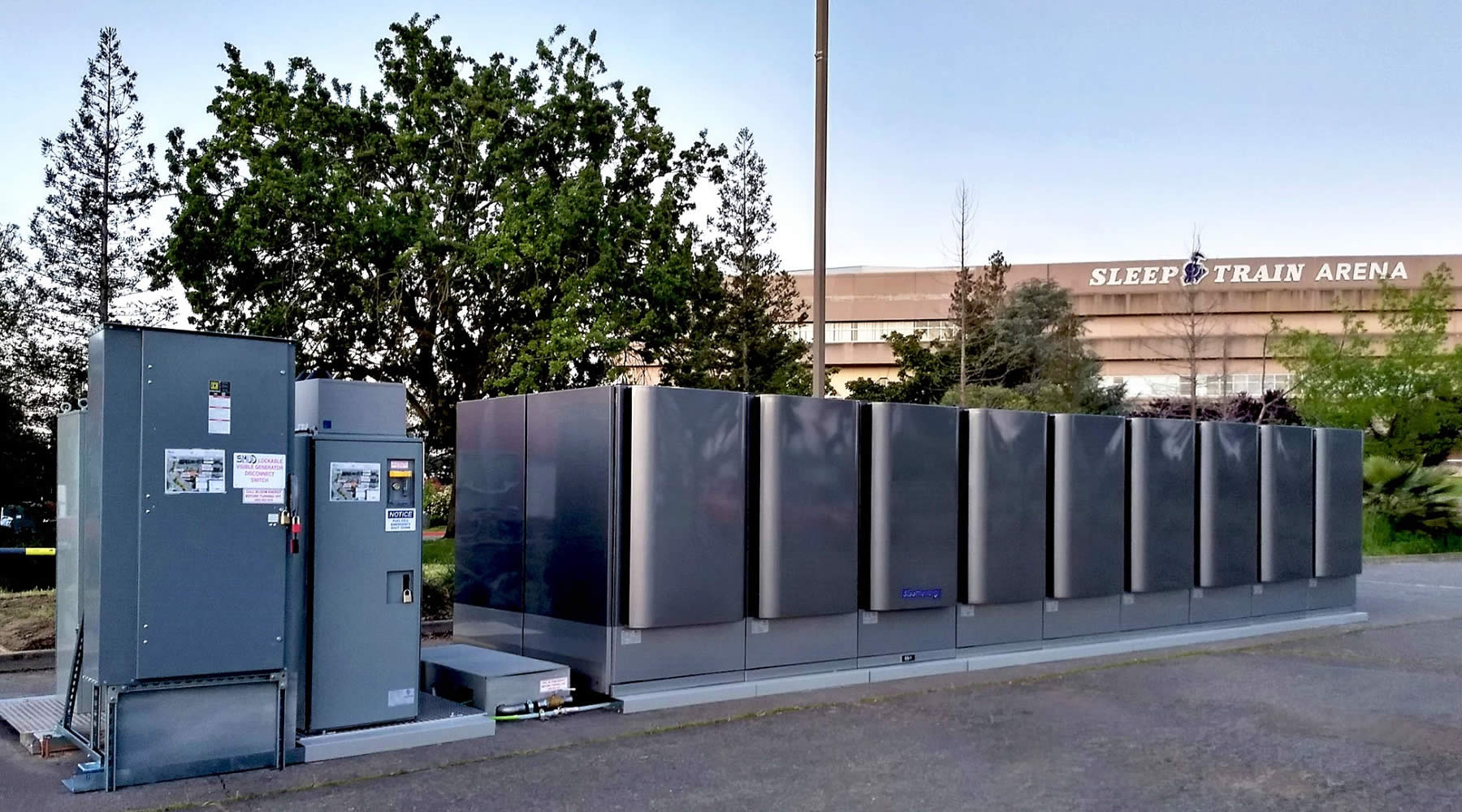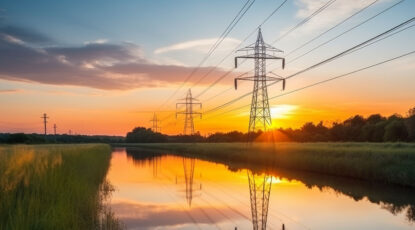Makeshift medical facilities known as field hospitals are popping up one by one across the nation, giving purpose to now-vacant convention centers, parks, arenas, and sometimes even empty parking lots.
As the coronavirus outbreak continues to overwhelm the country’s existing healthcare system, the need for additional hospital capacity – specifically, more beds – is palpable.
Standing up these temporary field hospitals reduces the strain on existing facilities and enables the treatment of more patients in the scenario that the ‘curve’ isn’t flattened quickly enough. And unfortunately, this is a reality we must be prepared for.
According to Institute for Health Metrics and Evaluation (IHME) data (updated on April 17th), the U.S. may need upwards of 211,000 beds around the peak of the COVID-19 outbreak, which could create a shortage of more than 152,000 beds.
These projections, while unsettling, only further affirm the urgent role temporary field hospitals play in effectively addressing the COVID-19 pandemic.
RELATED: We’re stepping up to aid the COVID-19 battle; we need your help
How do you power a temporary hospital?
Swiftly building these pop-up hospitals is an important first step in increasing bed capacity. But what comes next is just as critical – how do you power the temporary site?
Any type of hospital – temporary or not – needs a reliable power source to ensure life-saving equipment and machinery remains available 24/7/365, with zero risk of power failures. And, for COVID-19 field hospitals, time to power must also be a consideration. With patients’ lives at stake, every minute counts – deploying a power source shouldn’t be a roadblock to treatment.
The traditional choice for this kind of rapid, temporary deployment is a diesel generator. But, as hospitals and local leaders consider the impact that COVID-19 has on patients (it attacks the lungs and the respiratory system) and compare that with the local air pollutants that nearby diesels emit, they’re looking for alternatives.
RELATED: The Dangers of Combustion-Based Power

The training facility adjacent to Sleep Train Arena in Sacramento, CA can host approximately 100 hospital beds to support COVID-19 response efforts.
Field hospitals consider local air quality
Last month, the State of California began work to close its bed capacity gap. Governor Gavin Newsom announced on April 6th that Sleep Train Arena, the former home of the Sacramento Kings basketball team, would be transformed into a field hospital, capable of treating hundreds of overflow COVID-19 patients.
The arena itself already has a power supply, but the training facility next door doesn’t have any kind of backup power. This training facility has capacity for about 100 hospital beds, a significant supplement to the 200+ beds that would be based within the arena.
A surge in hospitalizations due to #COVID19 is coming and CA is getting prepared.
Today, Governor @GavinNewsom announced that CA is expanding its hospital capacity through use of alternate care sites, like the Sleep Train Arena in Sacramento. #StayHomeSaveLives pic.twitter.com/J6lLU5QqgJ
— Office of the Governor of California (@CAgovernor) April 7, 2020
Recently, Harvard researchers found that even the slightest elevation in air pollutants can make all the difference in how patients respond to COVID-19. The study concluded that higher levels of a tiny, dangerous particle, known as PM 2.5, was associated with higher death rates in coronavirus patients.
One of the common sources of PM 2.5 is fuel combustion – like those in diesel generators. Breathing in the microscopic pollutant inflames and damages the lining of the lungs, weakening the body’s ability to fend off respiratory infections.
So, combusting fuel directly adjacent to the patients that are being treated for respiratory disease was not a desirable outcome. Time to consider another less ‘traditional,’ more innovative option.
Tackling the public health crisis with innovation
As Governor Newsom voiced at a recent press conference, ‘the spirit of California’ is one of innovation – and you can bet we’ll leverage that innovative spirit to tackle this public health crisis head-on.
RELATED: Three Leadership Lessons from Silicon Valley Clean Energy Pioneers
After calling on the Bloom Energy team to quickly refurbish hundreds of ventilators to aid the COVID-19 response, the State of California looked to Bloom once again to support a different battle-front – providing clean, reliable power for the Sacramento field hospital.
If you know any organizations that have out-of-service ventilators, get in touch with us here

The thing that is unique about Bloom’s Energy Servers is that they are powered by fuel cells; meaning electricity is produced through an electrochemical reaction – not combustion – virtually eliminating the smog-forming pollution and particulate matter that comes from existing combustion-based power generation sources, like diesel generators.
Additionally, this technology operates 24 hours a day, 7 days a week, 365 days a year, providing the always-on power that hospitals need in order to focus on what they do best – serving patients and saving lives.
The Bloom team quickly got to work installing a 400-kilowatt rapid-deploy microgrid adjacent to the arena. The microgrid solution was installed in record time (less than a week) and three days ahead of schedule.
In addition to the Sleep Train Arena project, Bloom also recently rapidly deployed a microgrid at the Vallejo, California site of a national hospital system in only three days – five days ahead of schedule. Bloom’s Energy Servers were already powering the main hospital at the site, but the newly installed microgrid can supply primary power for a field hospital in the hospital’s parking lot to accommodate coronavirus patient overflow, if needed.

Bloom’s rapid-deploy microgrid solution in the process of being built for a Sacramento, CA field hospital. The installation was completed three days ahead of schedule.
Both of these energy solutions are up and running today, and we’re already working with government leaders and other essential businesses to explore further opportunities for rapid deployment to support critical pandemic response efforts. In the future, we will be able to use this solution for other rapid-deploy scenarios for emergency management.
Solving power constraints at existing and temporary hospitals
Fighting COVID-19 on two fronts
Working side by side with leading hospitals and local governments to fight the COVID-19 war on two fronts, and in turn, helping patients breathe easier, is beyond humbling.
Solving challenges through innovation and resilience has always been central to who we are and what we do – I’m just proud that our work and our technology can be a small part of the solution.
#TogetherWeCan #BeTheSolution

David Trevisan served as project leader for both the Vallejo and Sacramento rapid-deploy projects. In his 14 years at Bloom, he’s served many facets of the business – from system design to construction and installation – experience that lent itself to his successful leadership of these first-of-their-kind projects.



